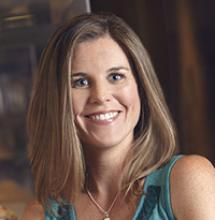Affiliation: Creighton University

Erin Walcek Averett is Associate Professor of Archaeology at Creighton University, and also serves as the Adjunct Curator of Antiquities at the Joslyn Art Museum in Omaha; she holds her Ph.D. from the University of Missouri. Her areas of specialization are the archaeology of Cyprus, Greek art and archaeology, ancient religion, figurine studies, Easten Mediterranean interactions, and the construction of gender in the ancient Mediterranean. Since 2003 Professor Averett has been the Assistant Director of the Athienou Archaeological Project on Cyprus.
Since 1990, the Athienou Archaeological Project has been exploring the fertile Malloura Valley in central Cyprus through survey and excavation. This was one of the first modern projects whose explicit aim was to reconstruct ancient life in the understudied rural hinterland of the island. The focus of our excavations for the past 20 years has been a large and rich open-air sanctuary, which has yielded an abundance of votive dedications and ritual material. This talk will use the Malloura sanctuary as a starting point for discussing the evidence for religion and ritual in the rural hinterland of Cyprus and how new digital technologies can aid in our understanding of the past. Rural sanctuaries on the island are not distinguished by architecture, but rather by often stunning displays of votive dedications, especially terracotta and limestone statuary. These offerings were dedicated in great numbers, flourishing especially in the Cypro-Archaic and Classical periods, ca. 800-400 BCE, and shed light on Cypriot worshippers and deities. In addition, artistic depictions of ritual events together with artifacts recovered (such as pottery, animal remains, and ritual paraphernalia) from the sanctuaries provide evidence for the activities that took place in these sacred precincts, including ritual banqueting, musical performances, and dancing. Luckily, new visualization tools, including 3D imaging and mapping, are transforming how we capture and disseminate artifactual data related to Cypriot religion. These new digital tools provide unprecedented, remote access to objects, especially sculpture (the focus of my work), but they also enhance our ability to manipulate large data sets and conduct comparative analyses. This paper examines the role of 3D documentation in the study of Cypriot votive religion, exploring how new technologies are helping us to understand Cypriot sanctuaries and the activities of ancient worshippers differently.
Short bibliography and/or website on lecture topic: